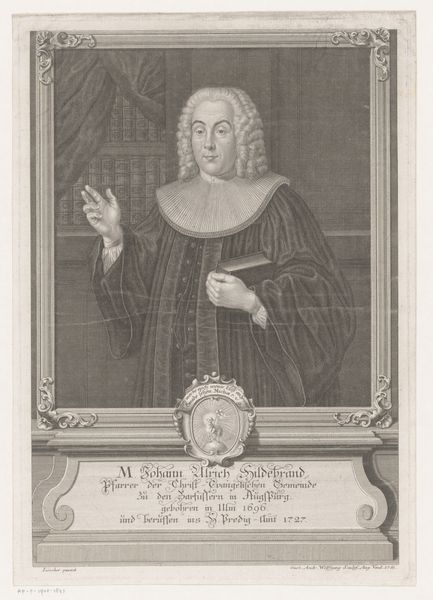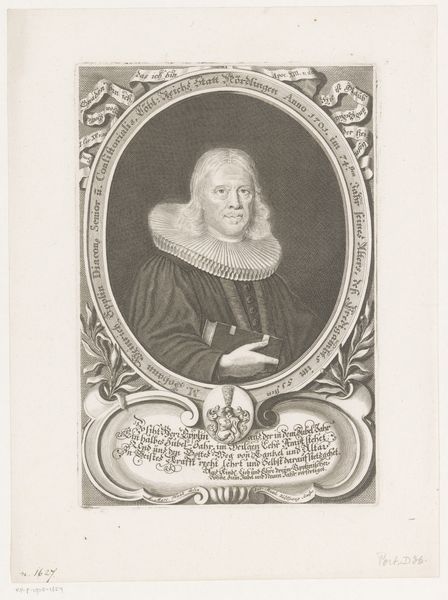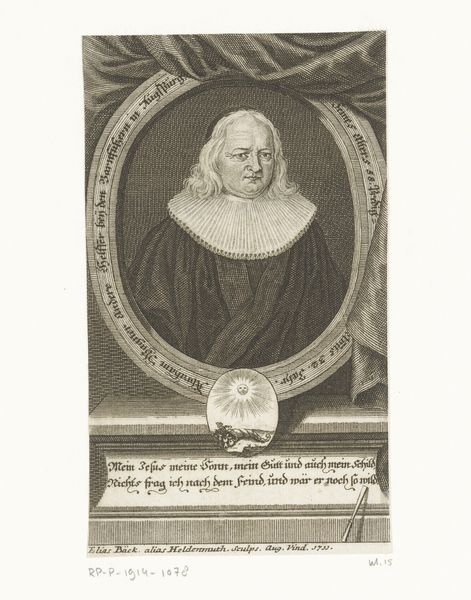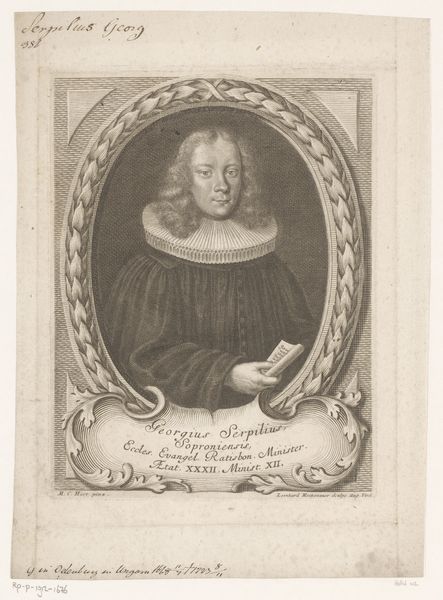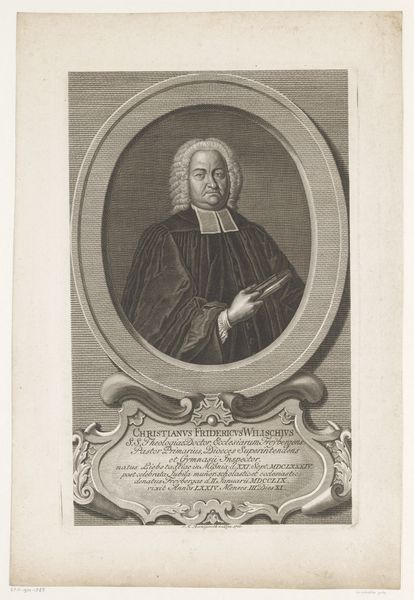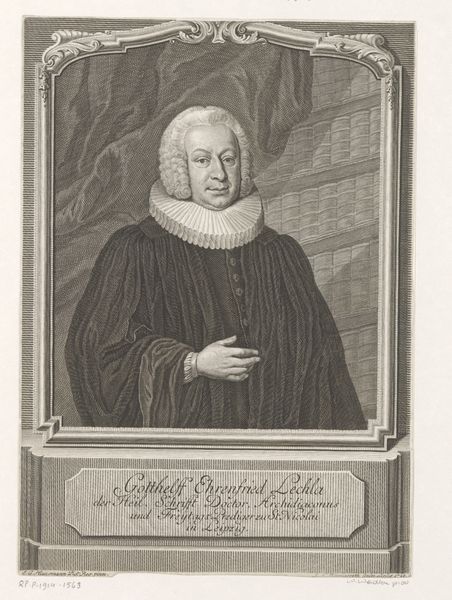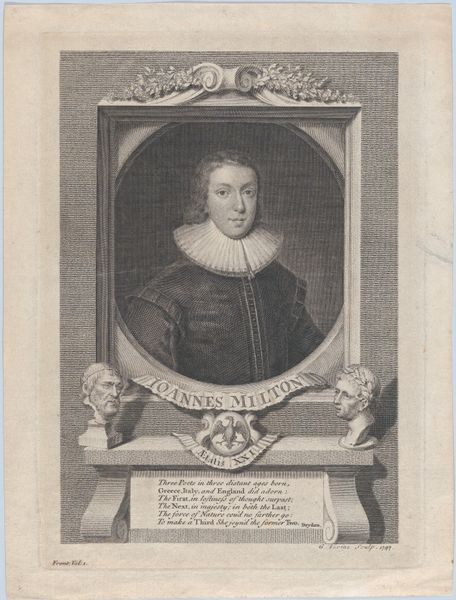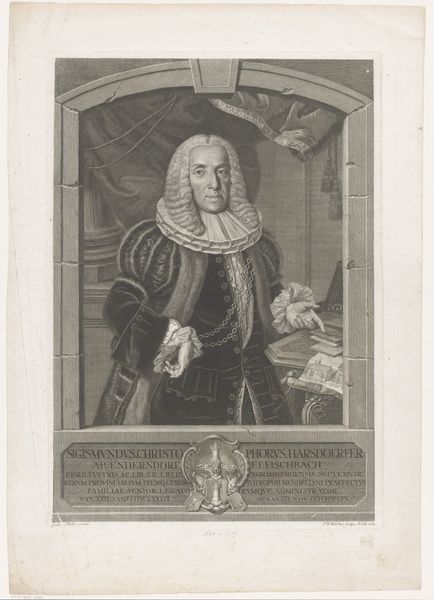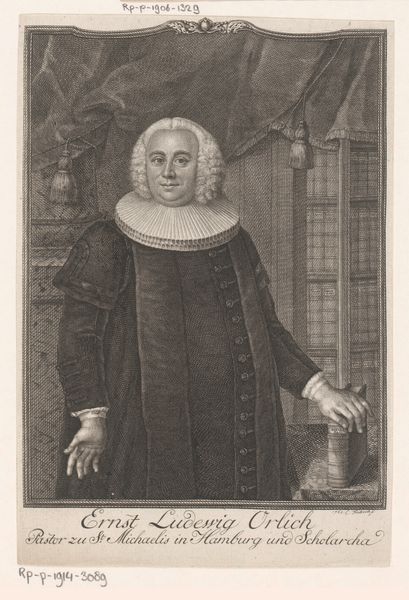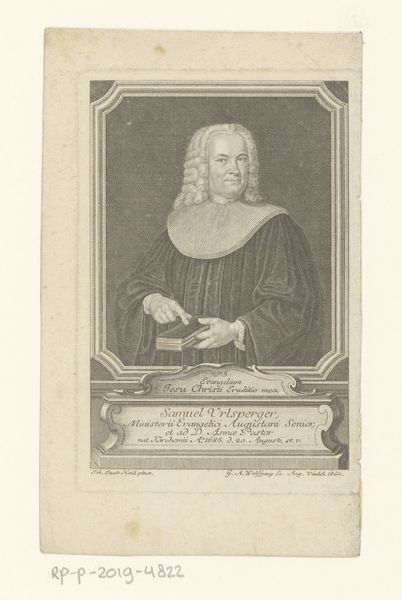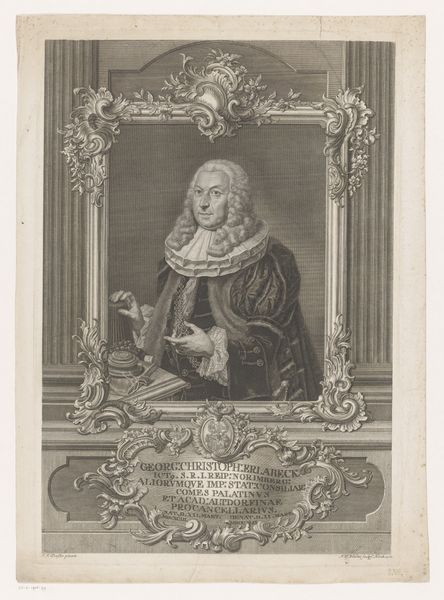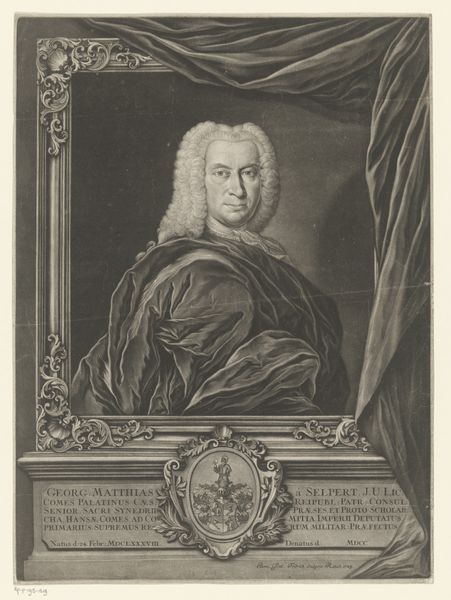
engraving
#
portrait
#
baroque
#
caricature
#
history-painting
#
engraving
Dimensions: height 145 mm, width 88 mm
Copyright: Rijks Museum: Open Domain
This portrait of Johann Philipp Fresenius was made by Johann Christoph Sysang using engraving, a printmaking process with a long and rich history. To create this image, Sysang would have used a tool called a burin to carve lines directly into a metal plate, likely copper. These incised lines hold ink, which is then transferred to paper under high pressure, demanding immense skill and control. Look closely, and you can appreciate the sheer amount of labor involved in creating the fine details of Fresenius’s face, the folds of his clothing, and the ornate frame surrounding him. Engraving like this was not just a means of artistic expression, but also a key technology for disseminating information. Prints like this one allowed for the mass production of images, making them accessible to a wider audience than unique painted portraits. This connects the artistry to broader social issues of labor, skill, and the democratization of images. Understanding the materials, making, and context allows us to fully appreciate the artistry and cultural significance of this portrait.
Comments
No comments
Be the first to comment and join the conversation on the ultimate creative platform.
